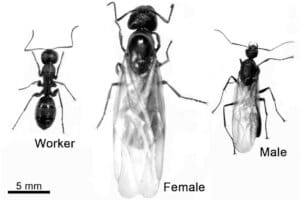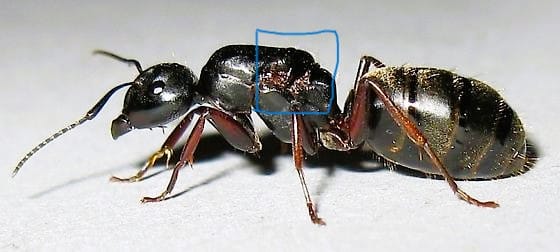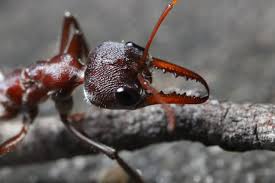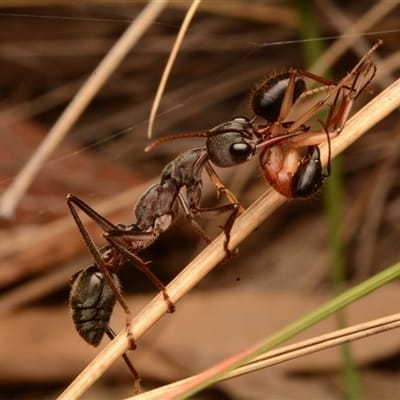Finding queen ants in Australia is one of the most exciting parts of the hobby. Whether you’re a beginner or a seasoned ant keeper, nothing beats spotting a wingless queen wandering alone after a nuptial flight. Want to start your own colony? It all begins with finding the right queen — and this guide will show you when, where, and how to make it happen.
1. What is a Queen Ant?
Queen ants are the reproductive powerhouses of the colony. After mating during a nuptial flight, they shed their wings and search for a place to start a new colony. Catching a queen ant gives you a chance to raise your own colony from scratch.
Want to know what to do next after you catch one? 🔗 What to Do with a Queen Ant After Capture
2. When Do Queen Ants Come Out?
Understanding nuptial flights is key to finding queen ants in Australia, as they emerge under very specific weather conditions.
🗓️ Best Seasons:
- Spring to early Autumn (Sept–March)
- Some species fly earlier or later depending on the climate.
⏰ Best Times of Day:
- Just after rain on a warm day (20–30°C)
- Late afternoon to early evening
🚨 Pro Tip: A good sign is if you see lots of alates (winged ants) the day before—flights often happen soon after.
For live tracking of nuptial flights, many Australian keepers use Ant Keeping Australia’s community on Facebook.
3. Best Places for Finding Queen Ants in Australia
You don’t need to dig or destroy nests—queens are found above ground after their flight.
🌱 Best Locations:
- Footpaths and driveways
- Backyards and parks
- Under lights at night
- Pavement edges or cracks
Look for ants walking alone, slower than usual, and larger than workers. They may be brown, red, or black depending on species.
🔗 Banded Sugar Ant – Full Care Guide
4. Tools to Help You Succeed
You don’t need much—but these can help:
- Test tubes or small containers – for temporary housing
- Headlamp or torch – for night collecting
- Notebook or phone – to record conditions and species
- A black light and sheet – for nocturnal species.

Keep spare test tubes handy! 🔗 The Perfect Test Tube Setup for Queen Ants
5. Don’t Collect Everything That Moves
Not every ant you see is a queen!
✅ Signs of a Queen:
- Large size compared to workers
- Wing scars or no wings at all
- Thick thorax (chest area)
❌ Not a Queen:
- Still has full wings (may not have mated yet)
- Moves quickly with a group
- Very small body
🔗 10 Common Mistakes Beginner Ant Keepers Make

Thorax (Middle Section of the Body)
- A queen’s thorax is much larger and more pronounced than a worker’s.
- This is because it once housed her wing muscles from the nuptial flight.
- Workers have a smaller, streamlined thorax for movement and foraging.
Wing Scars
- After mating, a queen sheds her wings, leaving small wing scars on her thorax.
- These scars look like tiny bumps or marks on the upper back area of the queen.
- Workers never have these scars, as they never had wings.

Behavior
- Queens move more slowly and cautiously, often searching for a nesting spot.
- Workers move quickly and with purpose, usually foraging for food.
- If you see an ant wandering aimlessly, it could be a queen searching for a place to nest.
Mandibles & Head Size
- Some queen ants have larger heads and mandibles, especially in species where queens are more involved in colony defense (e.g., Bull Ant queens).
- Worker ants often have more refined mandibles for carrying food and tending to the colony.

6. Catching Technique:
- Step 1: Approach the queen slowly to avoid startling her.
- Step 2: Place the opening of the test tube or container in front of her path.
- Step 3: Gently nudge her with a soft tool (e.g., a paintbrush or twig) into the tube.
- Step 4: Once inside, seal the tube with a cotton ball to ensure airflow.
- Pro Tip: Avoid using your fingers to pick her up, as some species can bite or sting.
A test tube setup is the best way to transport and house a queen—learn how to set one up in our guide on The Perfect Test Tube Setup for Queen Ants.
7. Stay Safe: Some Queens Can Bite or Sting
While most queens are harmless, some species (like Bull Ants) have painful bites or stings.
- Safety Tips:
- Avoid direct handling of queens, especially aggressive species like Bull Ants.
- Wear gloves if you’re unsure of the species.
- Always observe queens for signs of aggression, like raised mandibles or rapid movement.
6. Check Local Laws
It’s essential to understand the legal considerations of collecting ants from the wild:
- Protected Species: Some ant species may be protected by conservation laws. Research your local regulations to ensure ethical collection.
- Permits: In some cases, permits may be required to collect wildlife, including ants.
- Invasive Species: Avoid capturing and keeping invasive species, as this may harm local ecosystems.
Where to Find Information:
- Check your state or territory’s environmental protection department or wildlife conservation authority for guidelines on ant collection.
7. Popular Species to Look For
Australia is home to a wide range of fascinating ant species. Here are a few worth keeping:
- Bull Ants (Myrmecia):
- Large, aggressive, and fascinating to keep. Many species are nocturnal and attracted to light.
- Sugar Ants (Camponotus):
- Beginner-friendly species, known for their docile nature.
- Green Tree Ants (Oecophylla):
- Unique ants that create nests out of leaves. These are better for advanced keepers.
- Meat Ants (Iridomyrmex):
- Large, active ants that can form huge colonies.
8. Ethics and Conservation
- Respect Nature: Always ensure that your collection practices do not harm the environment.
- Release Unwanted Queens: If you catch a queen you don’t intend to keep, release her in a safe spot.
- Limit Collection: Only catch queens you plan to keep and care for.
Conclusion
Finding queen ants in Australia is an exciting and rewarding part of the ant-keeping journey. By understanding the seasons, habitats, and behaviors of queens, you’ll greatly improve your chances of success. Don’t forget to experiment with techniques like black lights for nocturnal species, and always follow local laws to ensure ethical ant-keeping. Once you’ve secured your first queen, learn what happens next in our guide on Understanding Ant Colony Growth Stages.

